Cell Potential and Free Energy
Quick Notes
- Electrochemical cells are based on redox reactions: one substance is oxidized, another is reduced.
- A standard cell potential (E⦵cell) is calculated from standard reduction potentials for each half-cell.
- A positive E⦵cell means the reaction is thermodynamically favored (-ΔG°).
- A negative E⦵cell means the reaction is not thermodynamically favored (+ΔG°).
- Key relationship: ΔG° = −nFE⦵cell
where- n = moles of electrons
- F = 96,485 C mol−1
Full Notes
Recap – What Is a Half-Cell?
A half-cell is part of an electrochemical system where either oxidation or reduction happens. It usually consists of:
- A metal dipped into a solution of its own ions, OR
- A solution containing ions of the same element in different oxidation states (with a platinum electrode).
Two half-cells are connected together to form a full electrochemical cell, allowing electrons to flow from one half-cell (where oxidation happens) to the other (where reduction happens), generating an electrical current (electricity).
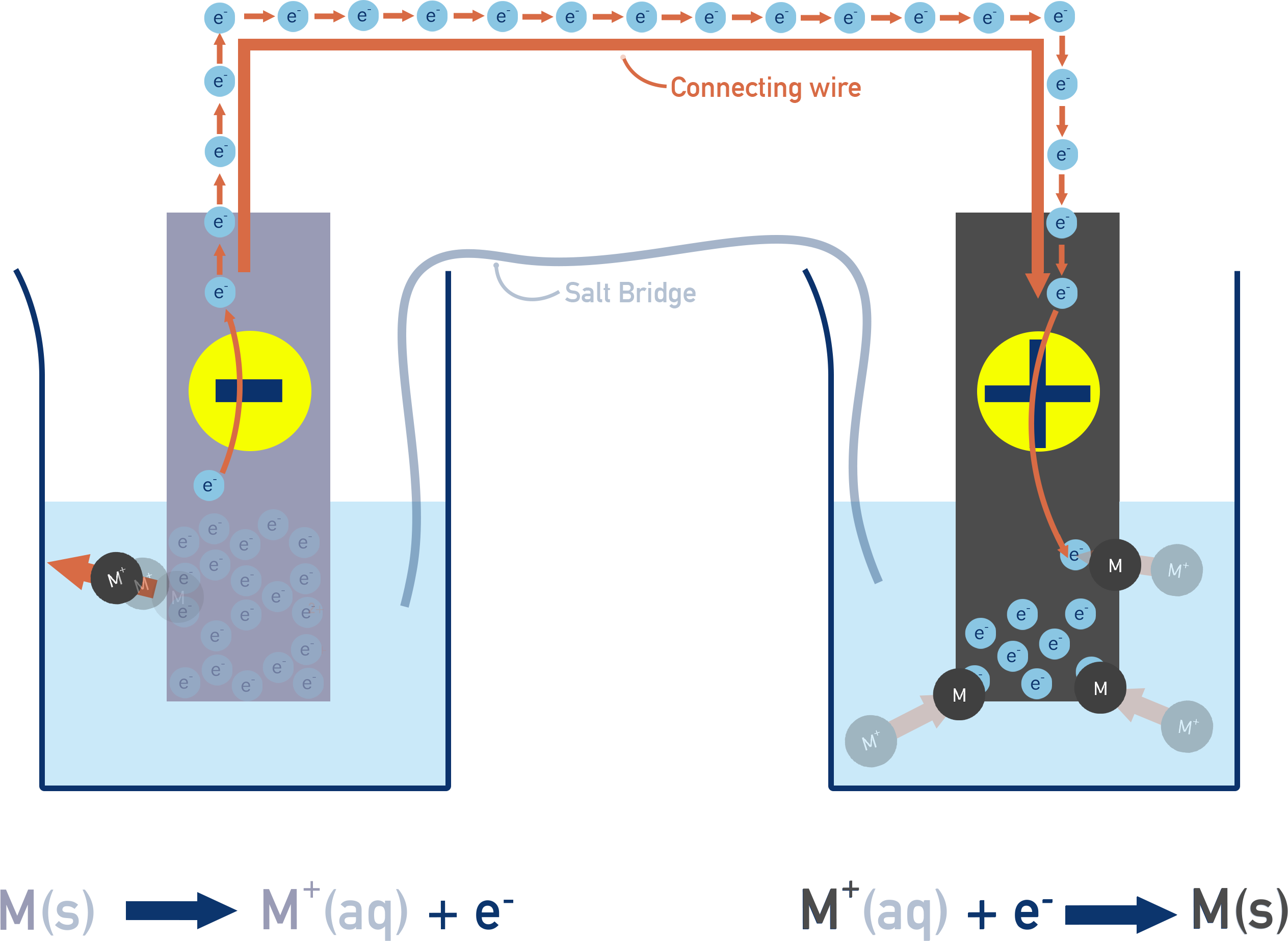
Oxidation and Reduction in a Half-Cell
Each half-cell contains two forms of a species — one in a higher oxidation state and one in a lower oxidation state.
- Reduction happens when the oxidised form gains electrons.
- Oxidation happens when the reduced form loses electrons.
Example: Copper Half-Cell
Cu2+(aq) + 2e− ⇌ Cu(s)
Cu2+ can gain electrons to form Cu (reduction).
Cu can lose electrons to form Cu2+ (oxidation).
What is a Reduction Potential (E°)?
A reduction potential (also called a standard electrode potential) (E°) tells us how easily the oxidised species in a half-cell gains electrons (is reduced), compared to H+ ions in the standard hydrogen electrode.
- Standard conditions: 298 K; 1 mol dm−3 ion concentrations; 100 kPa for gases.
- A more positive E° value means a greater tendency for reduction to occur.
- A more negative E° value means a greater tendency for oxidation to occur.
Key Point: When we describe an electrode potential (E°), we are talking about the ease with which the oxidised form of an element or ion in a half cell gains electrons (undergoes reduction).
The Standard Hydrogen Electrode (SHE)
The SHE is used as a reference point and is assigned an E° of exactly 0.00 V.
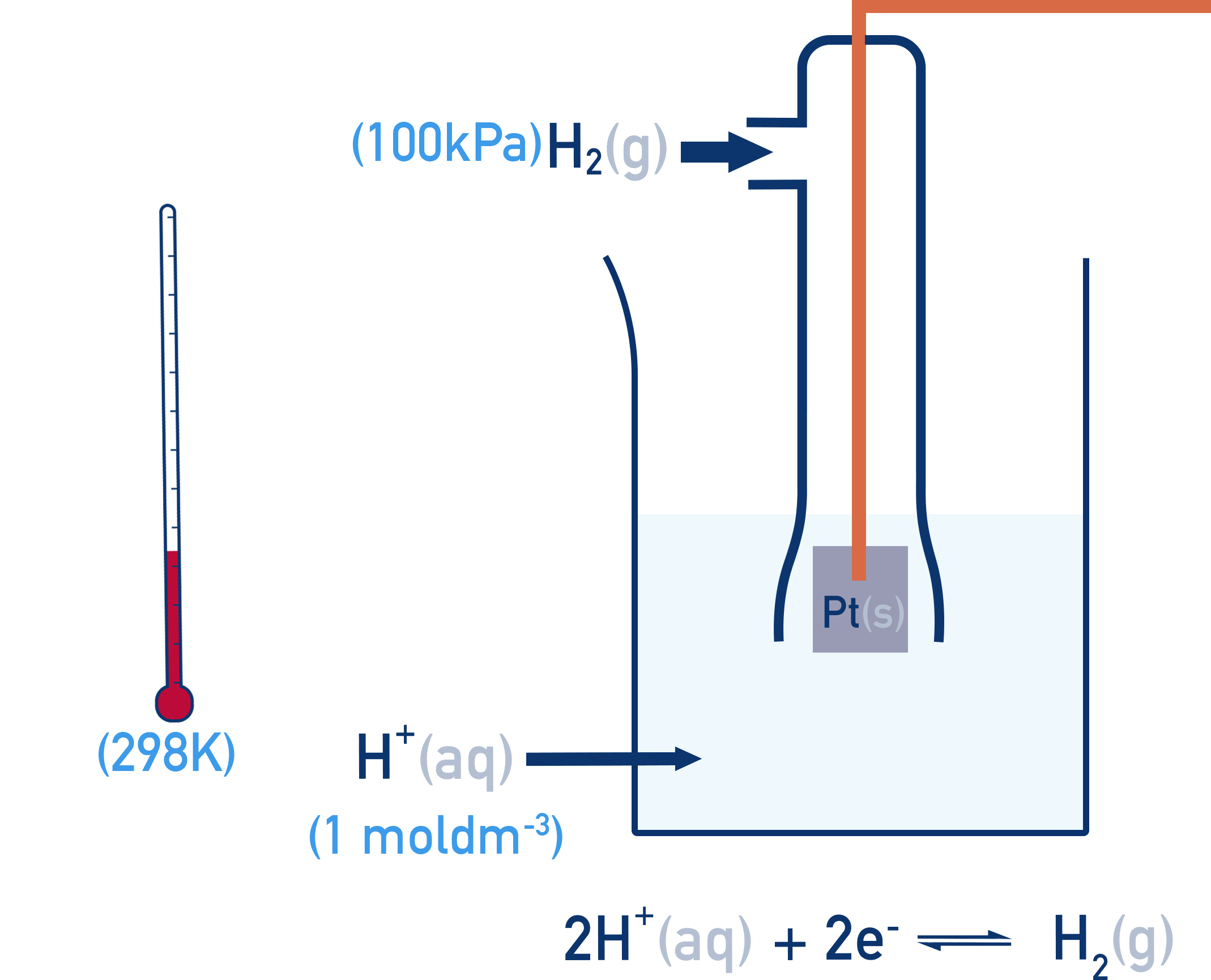
Setup: H2(g) at 100 kPa; 1 mol dm−3 H+(aq) (typically from HCl); platinum electrode; 298 K temperature.
When two standard hydrogen electrodes are connected together, the potential difference is 0.00 V. This is what enables us to 'compare' potentials of different half-cells.
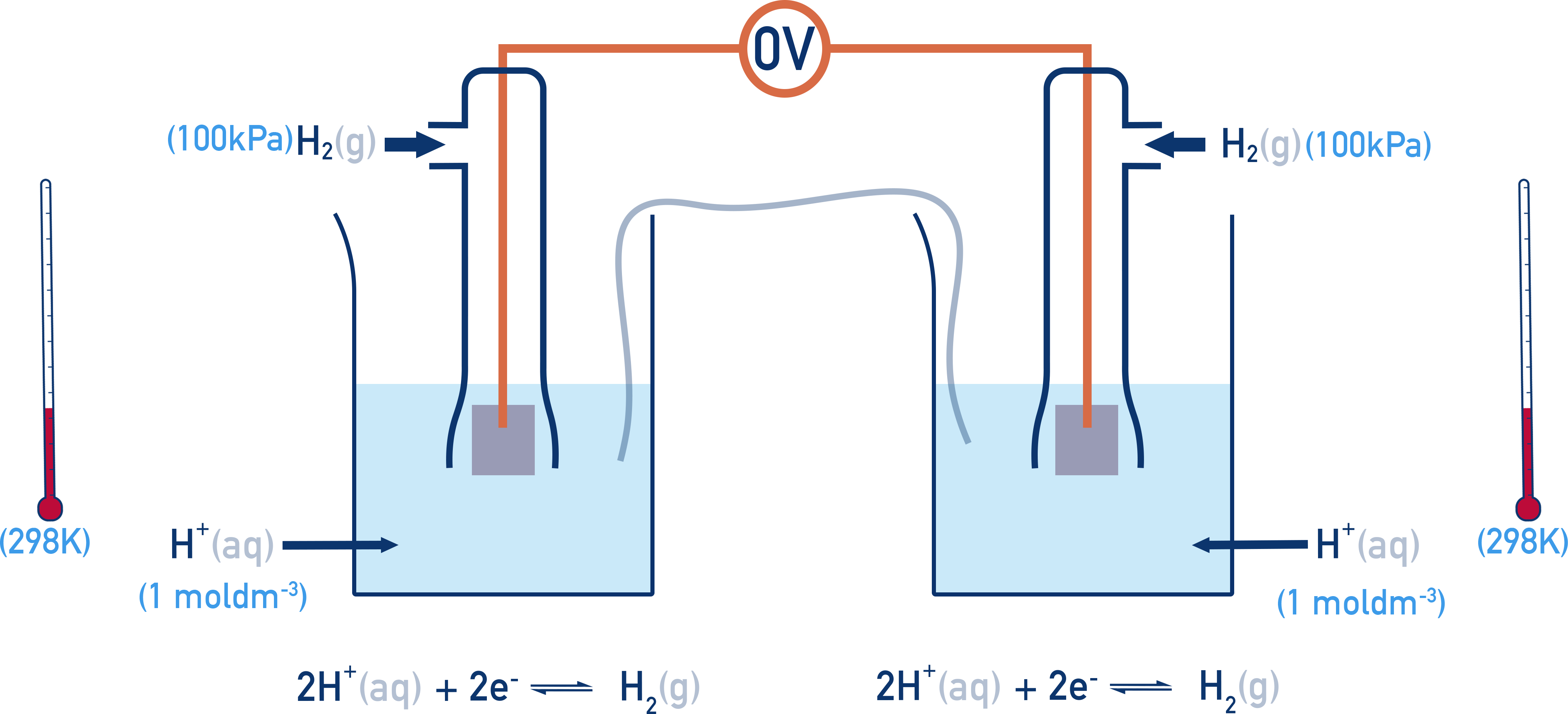
Measuring Reduction Potentials
A half-cell is connected to the SHE and the voltage measured is called the half-cell’s reduction potential, E°.
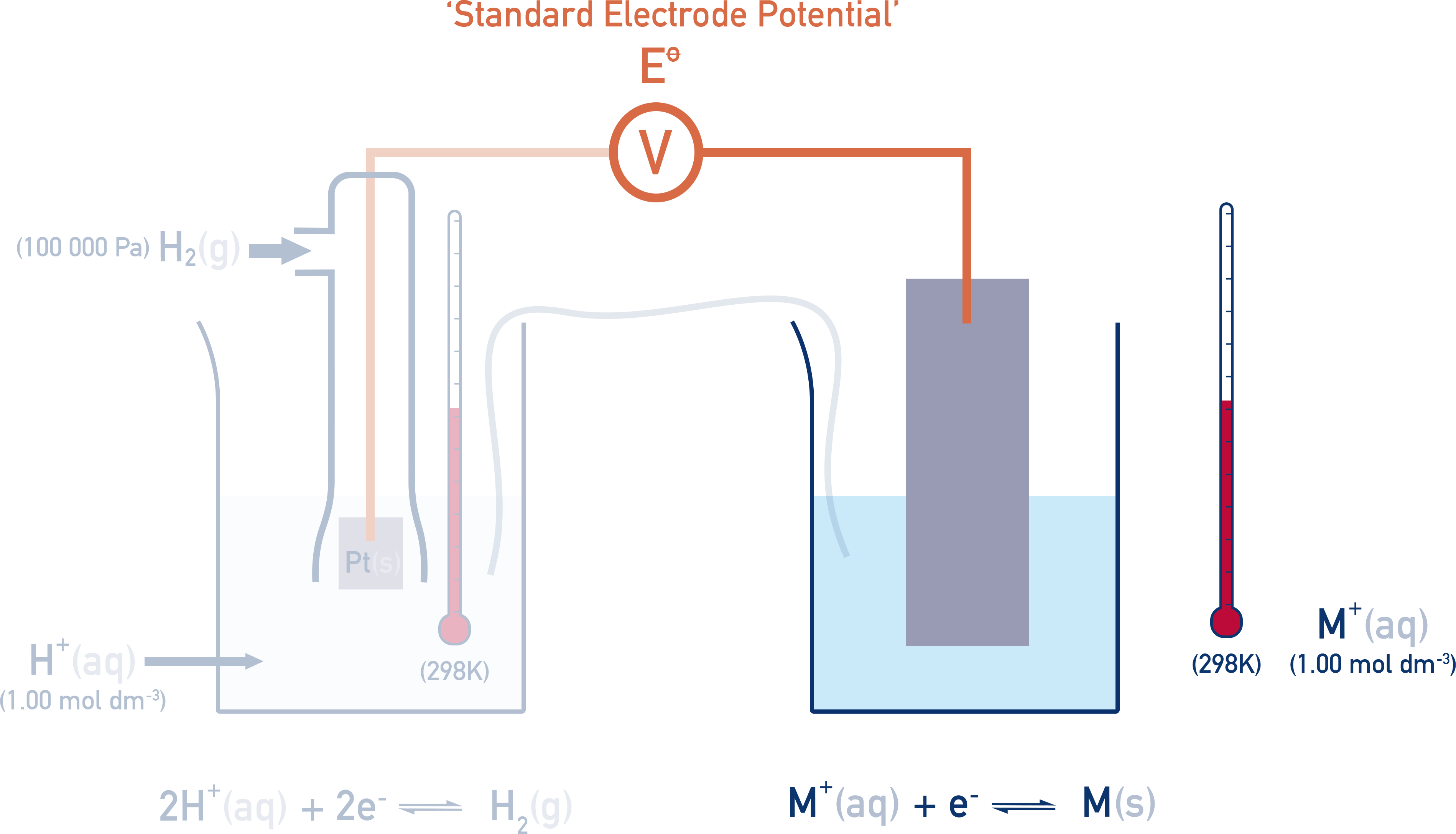
Reduction potentials are often put into a table called the electrochemical series.
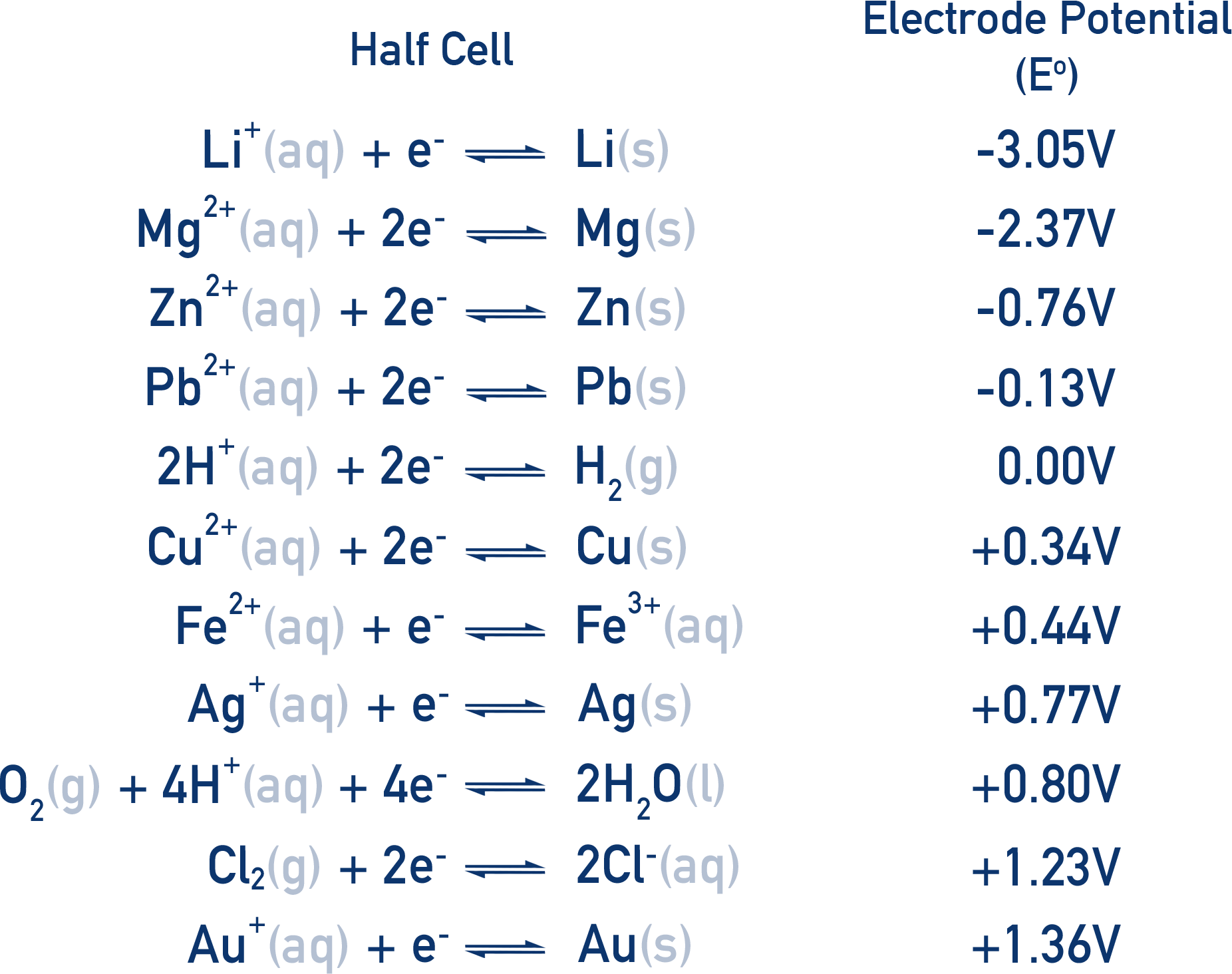
Half-Cell Setups
- (a) Metal or Non-Metal Half-Cells
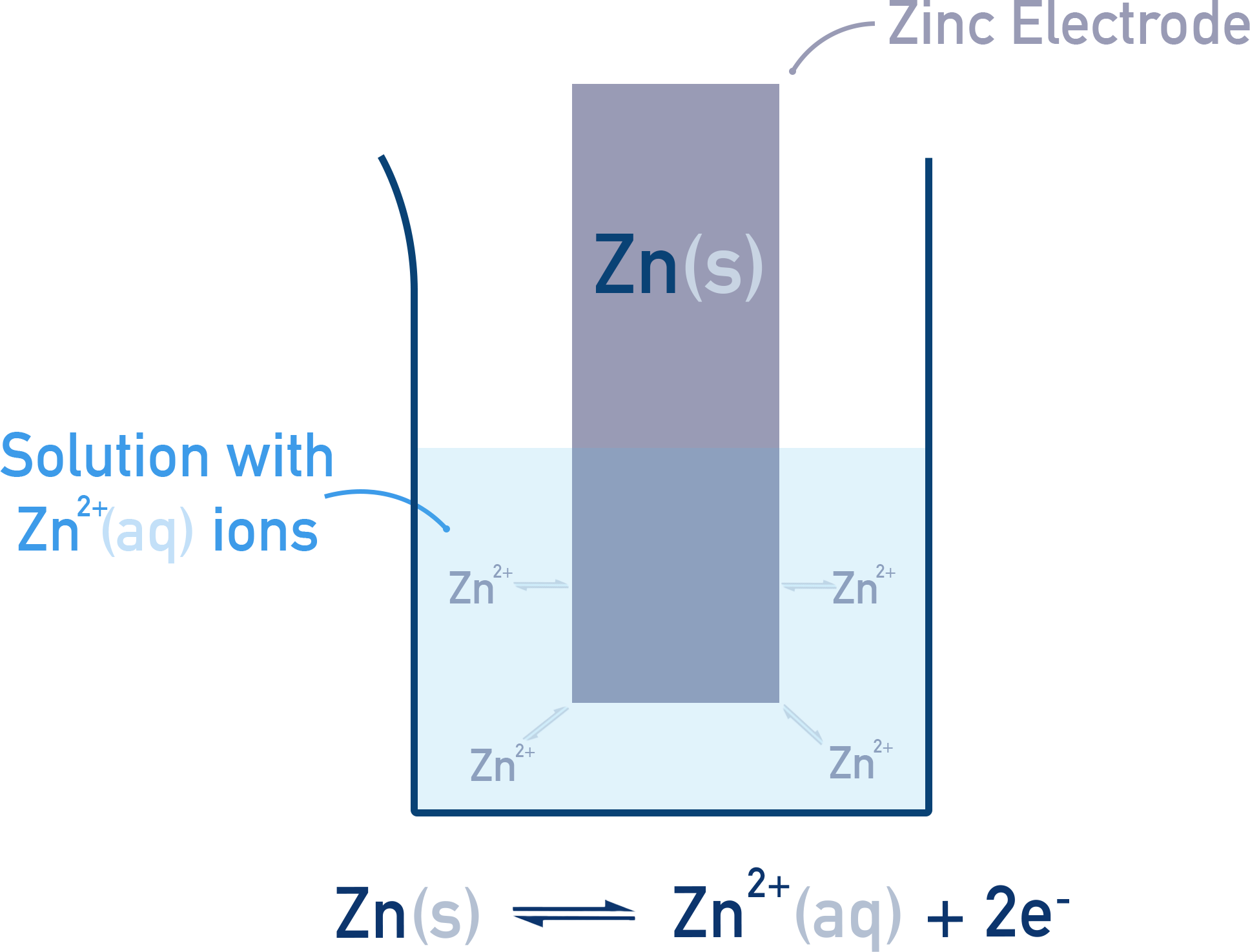
Example: A zinc rod in Zn²⁺ solution
.- (b) Different Oxidation States of the Same Element
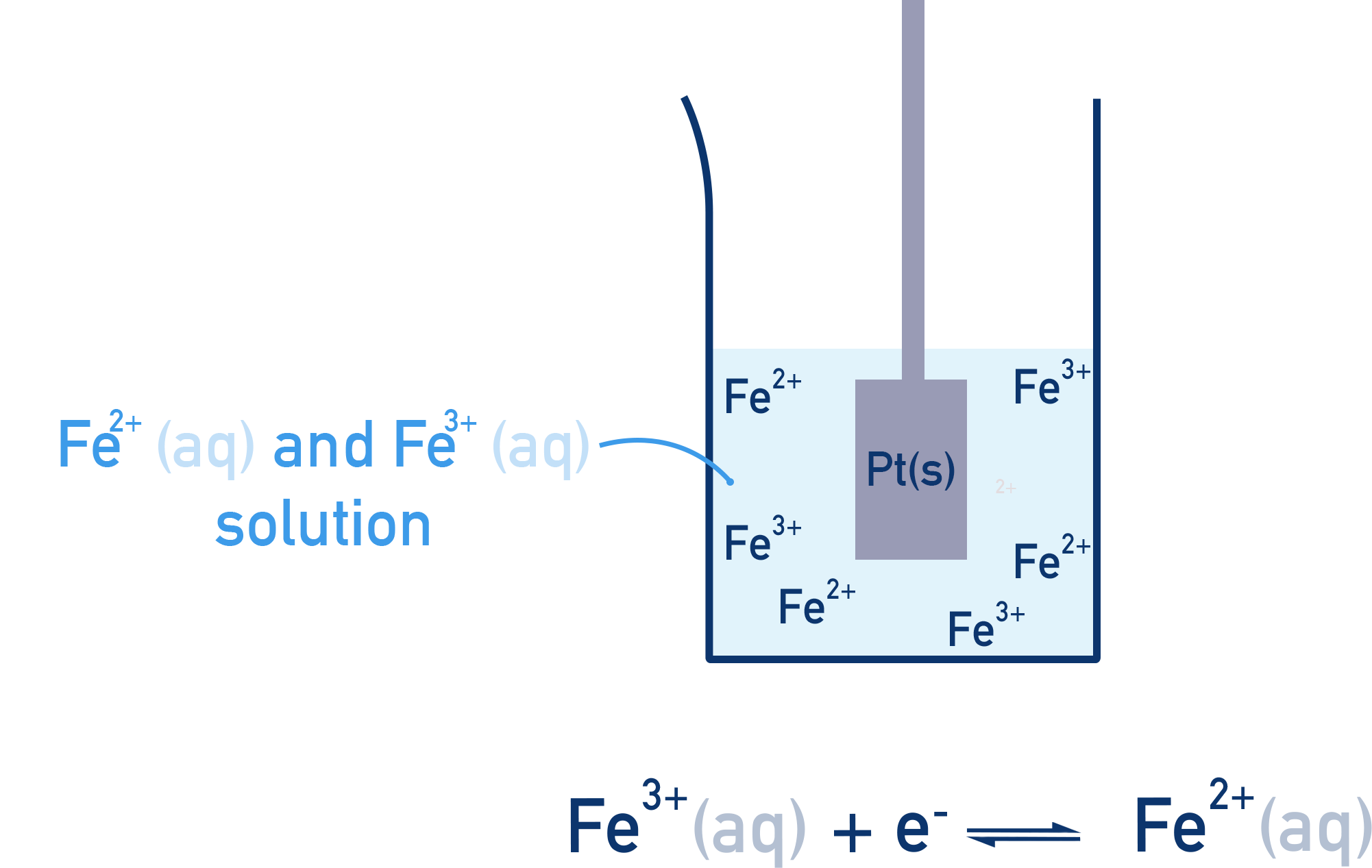
Example: A solution containing both Fe³⁺ and Fe²⁺ ions (with a platinum, Pt electrode).
Calculating and Interpreting E⦵cell
What Is Standard Cell Potential?
Standard cell potential (E⦵cell) is the overall potential difference produced by a voltaic cell under standard conditions. It can be used to tell us whether a redox reaction is spontaneous.

- The cathode is the half-cell where reduction happens (the half-cell with the more positive reduction electrode potential).
- The anode is the half-cell where oxidation happens (the half-cell with the more negative reduction potential).
Meaning you can also write this as:


In a spontaneous electrochemical cell, the half-cell with the more positive E° undergoes reduction, and the half-cell with the more negative E° undergoes oxidation. But be careful — in non-spontaneous processes (like electrolysis), this is reversed. Rather than relying on E° signs alone, always check which species is gaining electrons (reduction) and which is losing electrons (oxidation) to avoid mistakes.
Example: Zn and Cu Cell
Half-equations and their reduction potentials:
- Zn2+ + 2e− ⇌ Zn (E⦵ = −0.76 V)
- Cu2+ + 2e− ⇌ Cu (E⦵ = +0.34 V)
E⦵cell = +0.34 V − (−0.76 V) = +1.10 V
Spontaneous reaction: Zn + Cu2+ → Zn2+ + Cu
Predicting Spontaneity
Electrons flow from the more negative half-cell (anode) to the more positive half-cell (cathode).
- If E⦵cell is positive, the overall reaction is feasible.
- If E⦵cell is negative, the reverse reaction is favored.
- No spontaneity at E⦵cell = 0 (equilibrium).

A spontaneous reaction is one that can happen on its own, without energy input – but that doesn’t mean it will happen. If the activation energy is high, the reaction might be so slow that it appears not to occur at all. So spontaneity doesn't guarantee it will actually occur.
Reversibility and Spontaneity
If a redox reaction has a negative E⦵cell, the forward reaction is not spontaneous. However, the reverse reaction will be spontaneous, because the electrons would now flow in the opposite direction — from the now more negative to the more positive half-cell.
- If E⦵cell > 0 then forward reaction is spontaneous.
- If E⦵cell < 0 then reverse reaction is spontaneous.
Linking Gibbs Free Energy (ΔG°) and Electrochemistry
E⦵cell measures how strongly a redox reaction can push electrons through a circuit and drive a current. ΔG° measures how thermodynamically favourable the reaction is — how much energy is released or required. The energy available to drive an electric current (E⦵cell) comes directly from the energy change in the chemical reaction (ΔG°). These two quantities are linked by the equation:
ΔG° = −nFE⦵cell
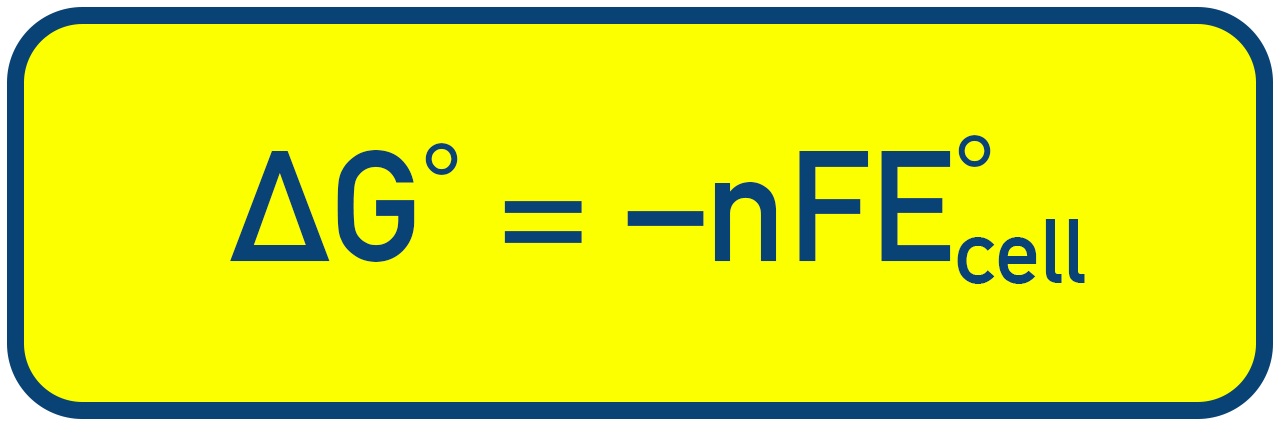
How to Use the Equation
- Identify n = number of electrons transferred from half-equations.
- Use E⦵cell from the data booklet.
- Use F = 96,500 C mol−1.
- Calculate ΔG° (in joules); divide by 1,000 for kJ mol−1.
Calculate E⦵cell and ΔG° for the reaction Zn + Cu2+ → Zn2+ + Cu under standard conditions.
- Write half-equations with E°
Zn2+ + 2e− ⇌ Zn (E⦵ = −0.76 V)
Cu2+ + 2e− ⇌ Cu (E⦵ = +0.34 V) - Identify cathode/anode
More positive reduces: Cu2+/Cu = cathode; Zn2+/Zn = anode. - Compute E⦵cell
E⦵cell = +0.34 − (−0.76) = +1.10 V - Find n
n = 2 electrons. - Calculate ΔG°
ΔG° = −nFE⦵cell = −(2)(96,500)(1.10) = −212,300 J mol−1 = −212.3 kJ mol−1
How can thermodynamic data be used to predict the spontaneity of a reaction?
Thermodynamic data — specifically values of enthalpy change (ΔH°) and entropy change (ΔS°) — can be used to calculate the Gibbs free energy change (ΔG°) using the equation:

Predicting Spontaneity
- If ΔG° < 0, the reaction is spontaneous (thermodynamically feasible).
- If ΔG° > 0, the reaction is non-spontaneous (not thermodynamically favourable).
- If ΔG° = 0, the system is at equilibrium.
This thermodynamic approach can be linked with electrochemistry, where spontaneity also corresponds to a positive E⦵cell.
Summary
- Each half-cell has a standard reduction potential (E°), measured against the standard hydrogen electrode (SHE).
- E⦵cell = E⦵cathode − E⦵anode.
- A positive E⦵cell means the overall reaction is spontaneous (ΔG° < 0).
- ΔG° = −nFE⦵cell links free energy and electrical work.
- Thermodynamic data (ΔH°, ΔS°) can also be used to calculate ΔG° and assess spontaneity.
